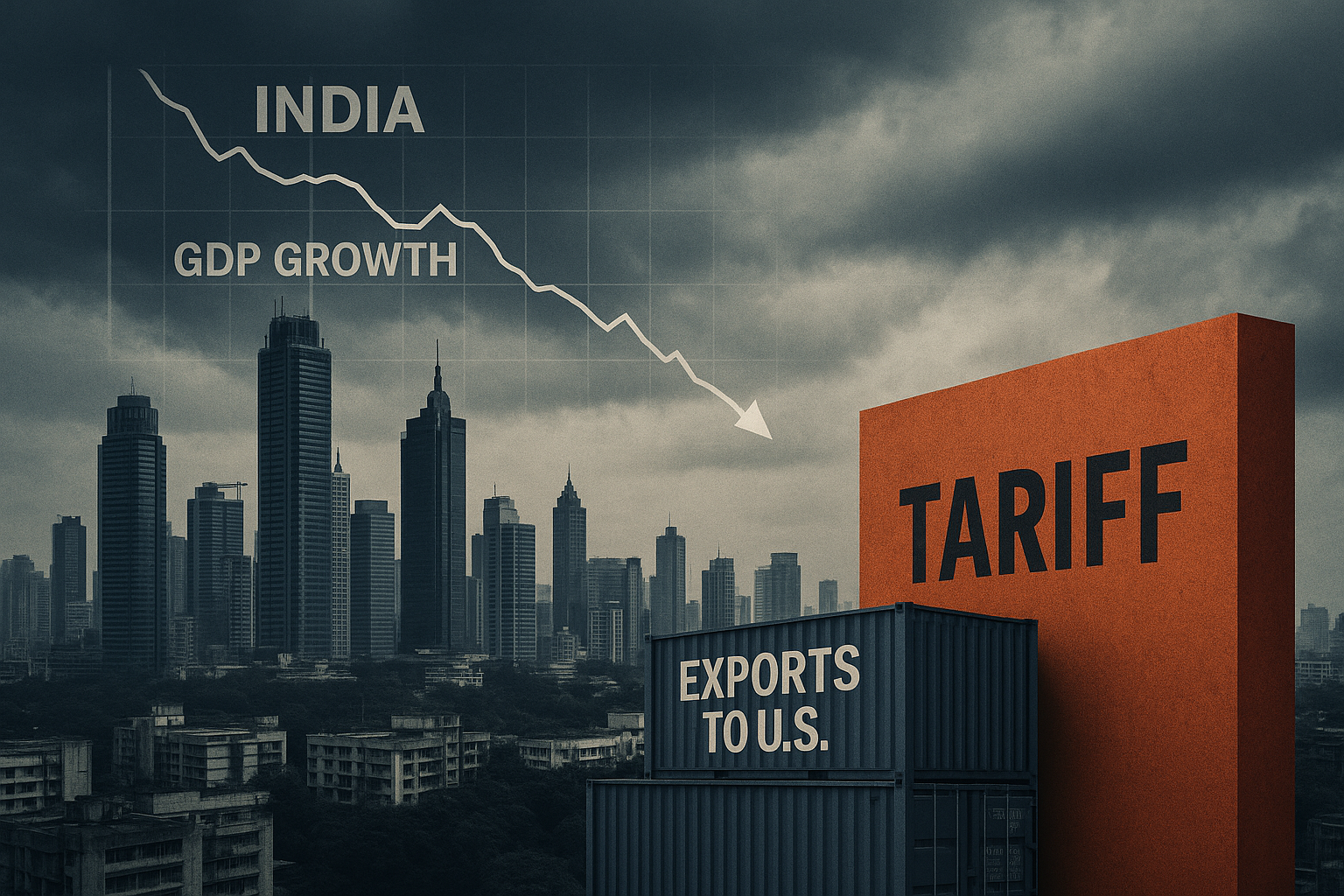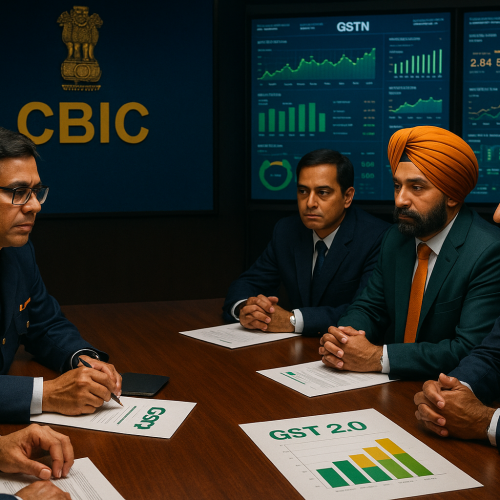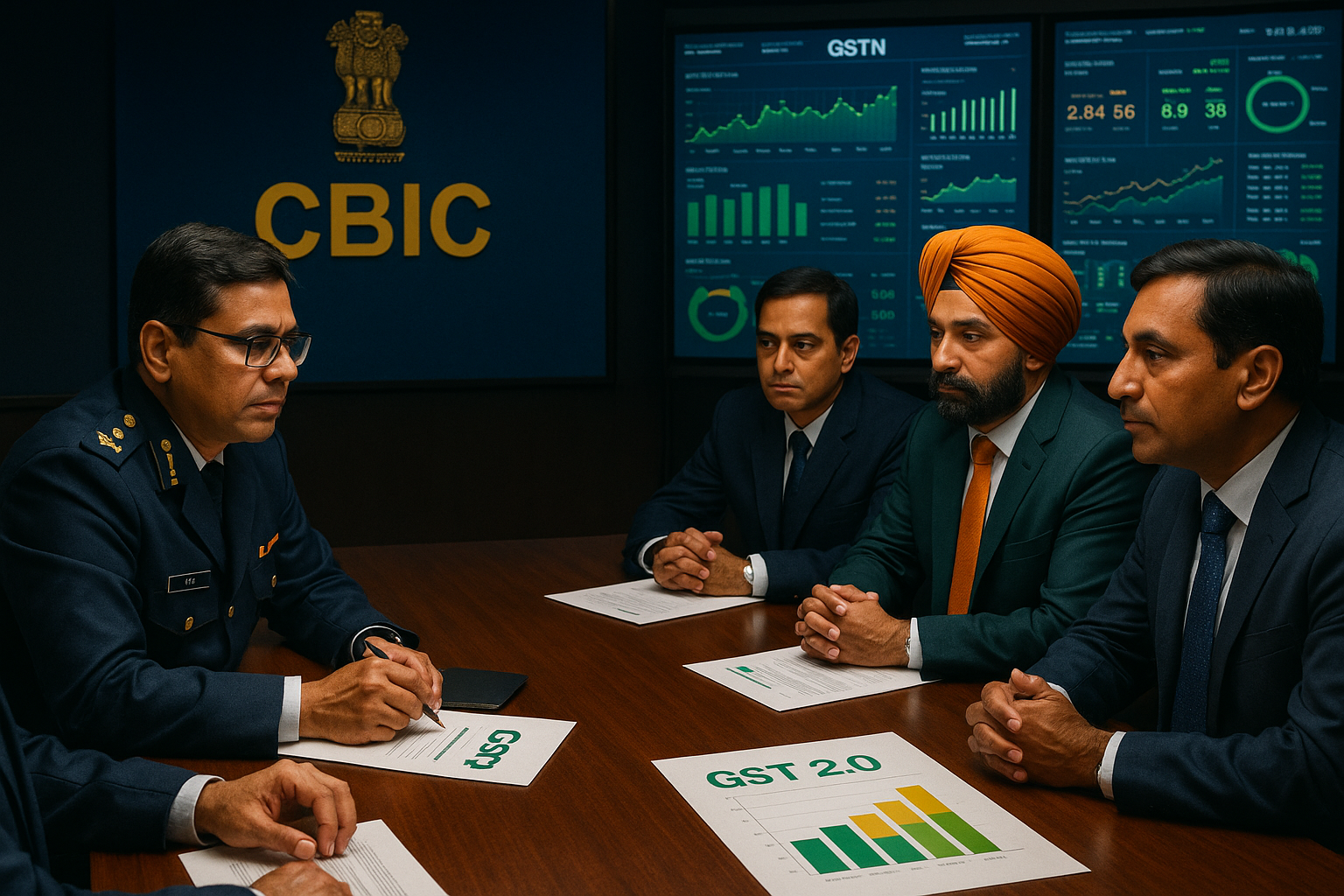India’s economy is estimated to have slowed during the April–June 2025 quarter, even before the full impact of steep U.S. tariffs on Indian exports takes hold. Weak external demand, uneven domestic consumption, and global uncertainties have weighed on growth, raising concerns about momentum in the coming quarters.
The anticipated slowdown comes at a critical juncture as policymakers work to safeguard growth while managing inflation, trade disruptions, and fiscal consolidation.
Drivers of the Slowdown
The moderation in growth is being linked to multiple domestic and external factors:
Muted Exports: Weaker global demand combined with trade tensions has already impacted India’s shipments of textiles, leather, and gems & jewellery.
Soft Consumption: Rural demand remained uneven, with inflation eating into household budgets despite stable urban spending.
Investment Caution: Businesses delayed expansion plans amid global uncertainty and currency volatility.
This combination suggests that India entered the U.S. tariff crisis with already fragile growth momentum.
Impact of U.S. Tariff Shock
The 50% tariff hike imposed by the U.S. on Indian exports is expected to further pressure growth in the July–September quarter. Since the U.S. accounts for nearly 20% of India’s exports, the fallout could weigh heavily on labour-intensive industries and manufacturing hubs dependent on external orders.
Policymakers now face the dual challenge of supporting exporters while ensuring broader macroeconomic stability.
Policy Responses on the Horizon
The government is expected to rely on a mix of measures to counter the slowdown:
Domestic Stimulus: Possible tax reliefs, GST rationalization, and infrastructure spending to boost demand.
Export Diversification: Expanding markets in Europe, Africa, and Southeast Asia to reduce dependence on the U.S.
Monetary Policy Flexibility: The RBI may adopt a more accommodative stance if growth weakens further while keeping inflation in check.
Why This Matters
For Businesses: Signals tougher times ahead for exporters and investment-linked sectors.
For Policymakers: Reinforces the urgency of structural reforms and trade diversification.
For Citizens: Slower growth could affect jobs, incomes, and overall economic optimism.
India’s April–June slowdown, combined with looming tariff headwinds, highlights the need for resilient, reform-driven strategies to keep growth on track.












